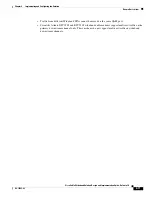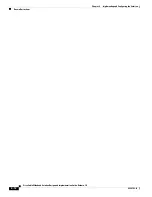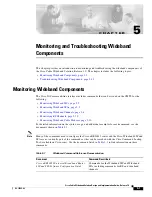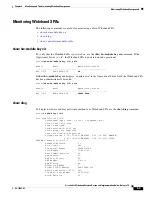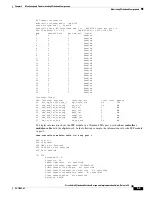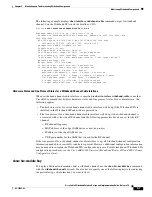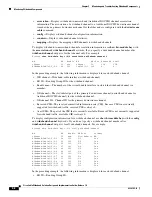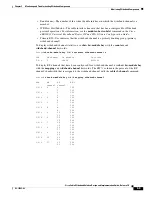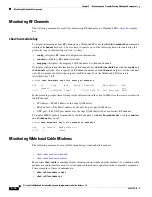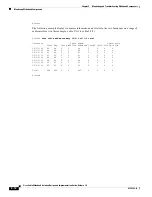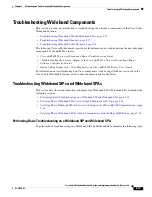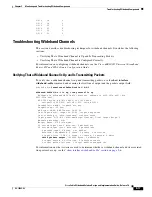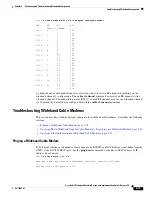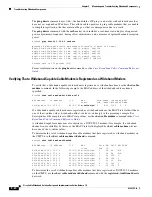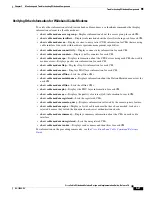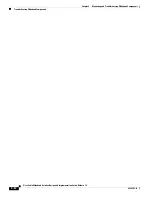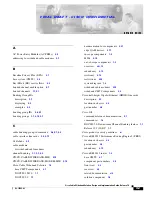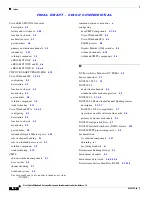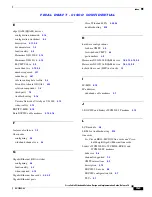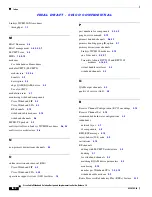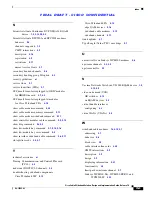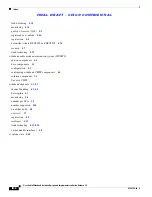
5-13
Cisco Cable Wideband Solution Design and Implementation Guide, Release 1.0
OL-10705-02
Chapter 5 Monitoring and Troubleshooting Wideband Components
Troubleshooting Wideband Components
Troubleshooting Wideband Components
This section provides an introduction to troubleshooting the wideband components of the Cisco Cable
Wideband Solution:
•
Troubleshooting Wideband SIPs and Wideband SPAs, page 5-13
•
Troubleshooting Wideband Channels, page 5-17
•
Troubleshooting Wideband Cable Modems, page 5-19
The following Cisco cable documents provide useful information on troubleshooting the non-wideband
components of the uBR10012 router:
•
Cisco uBR10012 Universal Broadband Router Troubleshooting Guide
•
“Troubleshooting the System” chapter in the
Cisco uBR10012 Universal Broadband Router
Software Configuration Guide
•
Online Offline Diagnostics—Field Diagnostics on Cisco uBR10012 Router User’s Guide
For information on troubleshooting non-Cisco components (such as edge QAM devices) used in the
Cisco Cable Wideband Solution, see the vendor documentation for the device.
Troubleshooting Wideband SIPs and Wideband SPAs
This section describes troubleshooting techniques for a Wideband SIP or Wideband SPA. It includes the
following sections:
•
Performing Basic Troubleshooting on a Wideband SIP and Wideband SPA, page 5-13
•
Verifying That a Wideband SPA’s Active Gigabit Ethernet Port Is Up, page 5-14
•
Verifying That a Wideband SPA Is Correctly Configured for SPA-to-EQAM Communications, page
5-16
•
Verifying That a Wideband SPA Is Able to Communicate with the Edge QAM Device, page 5-16
Performing Basic Troubleshooting on a Wideband SIP and Wideband SPA
To perform basic troubleshooting on a Wideband SIP and Wideband SPA, complete the following steps:

